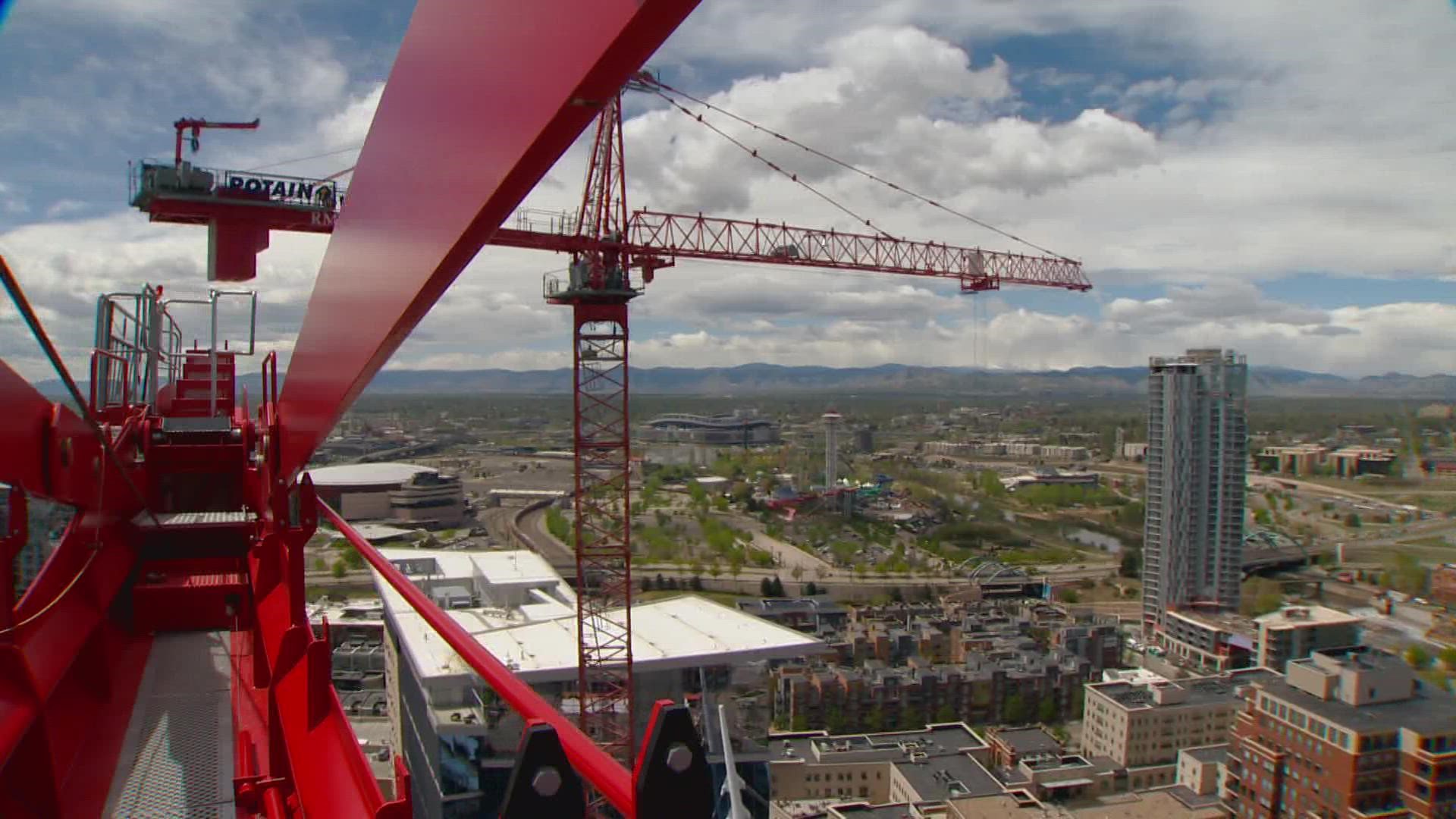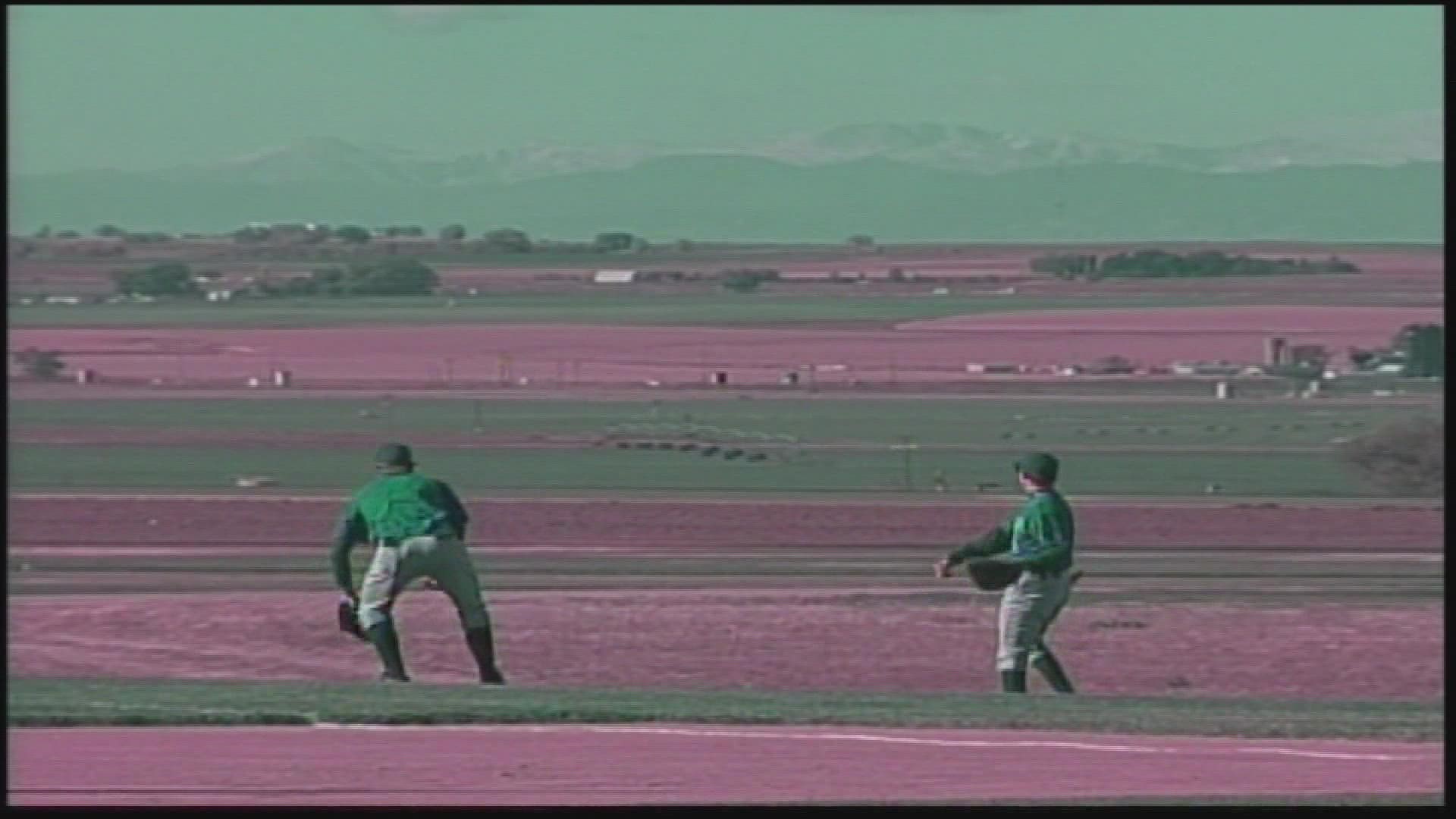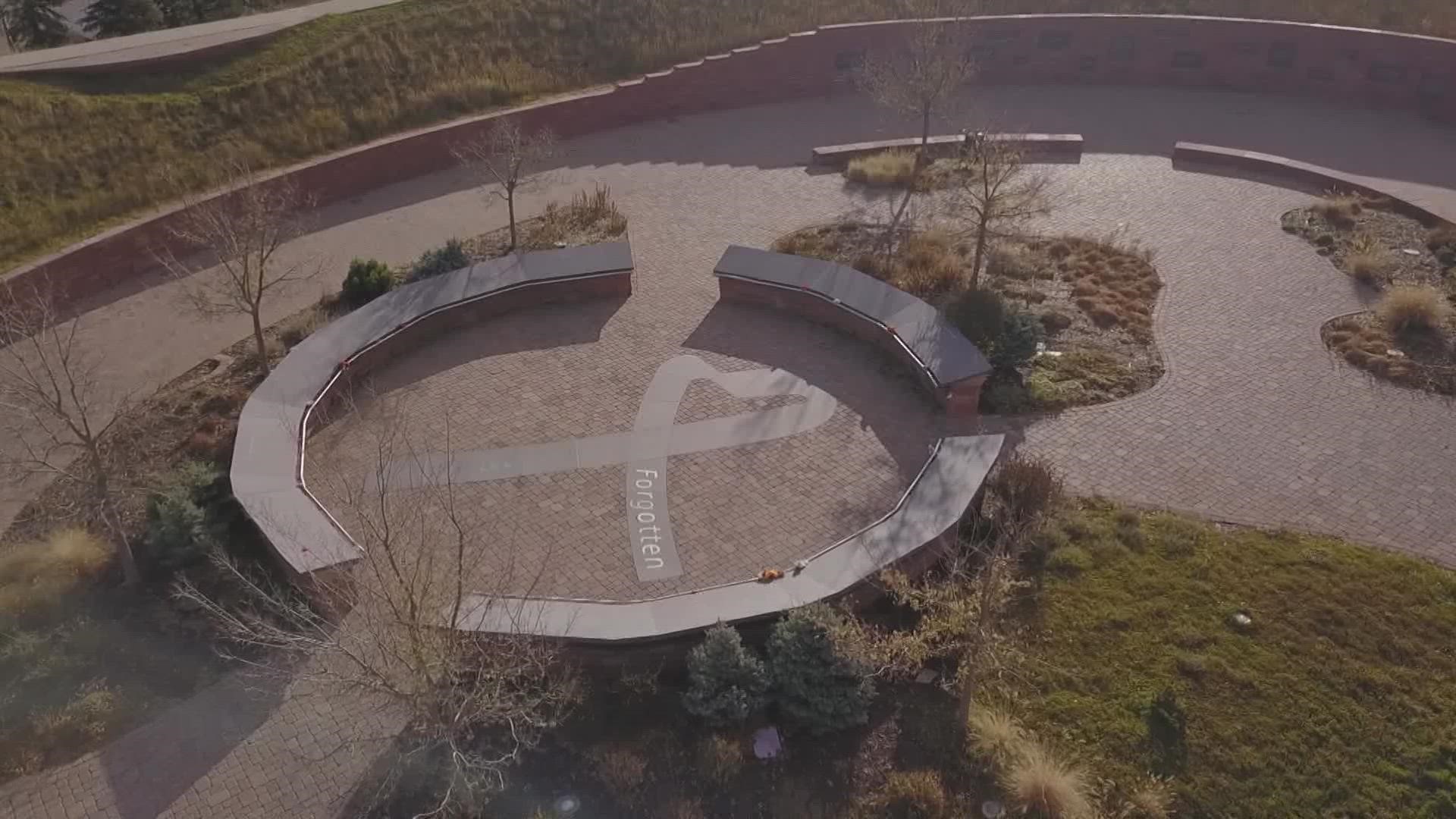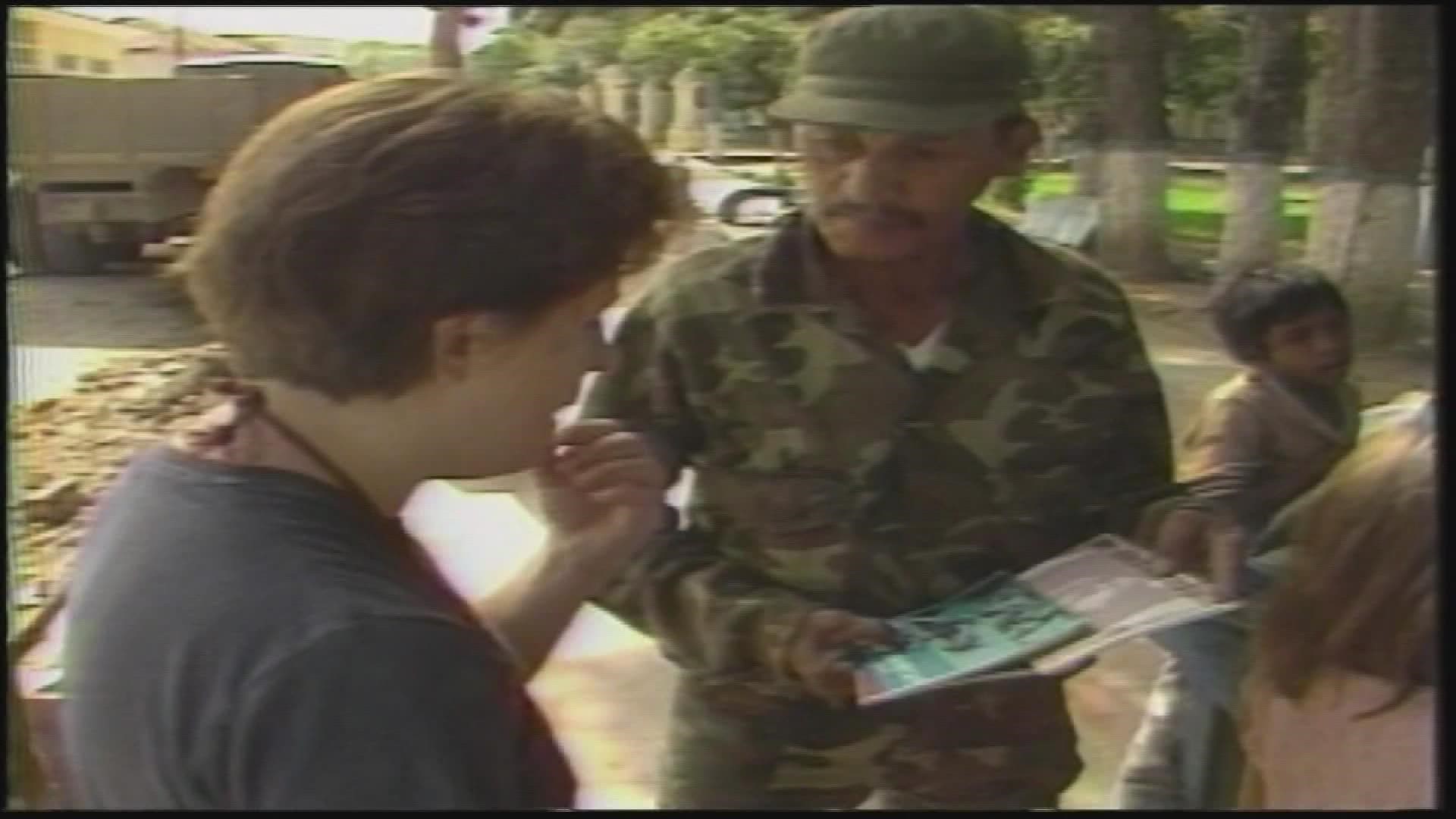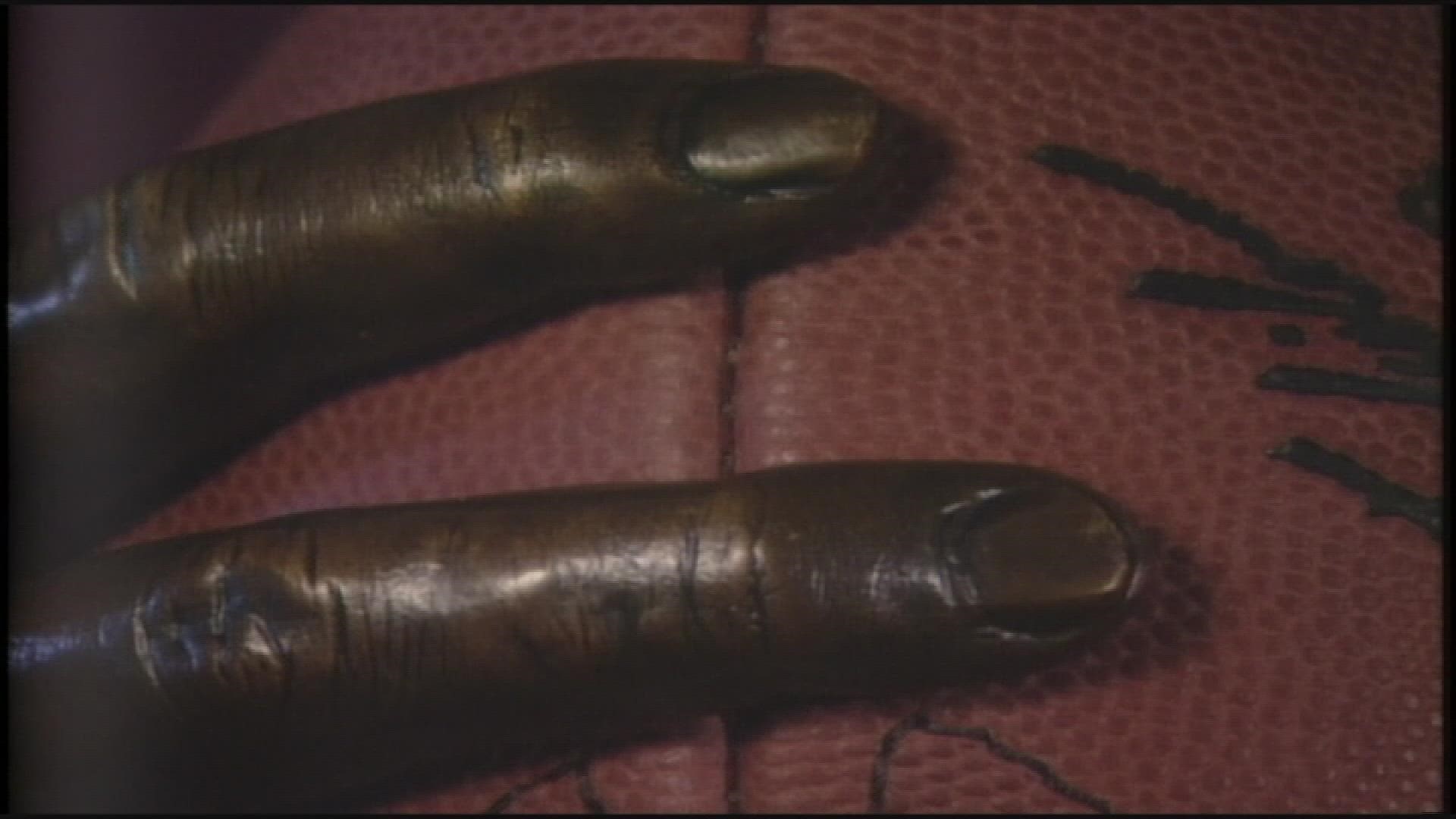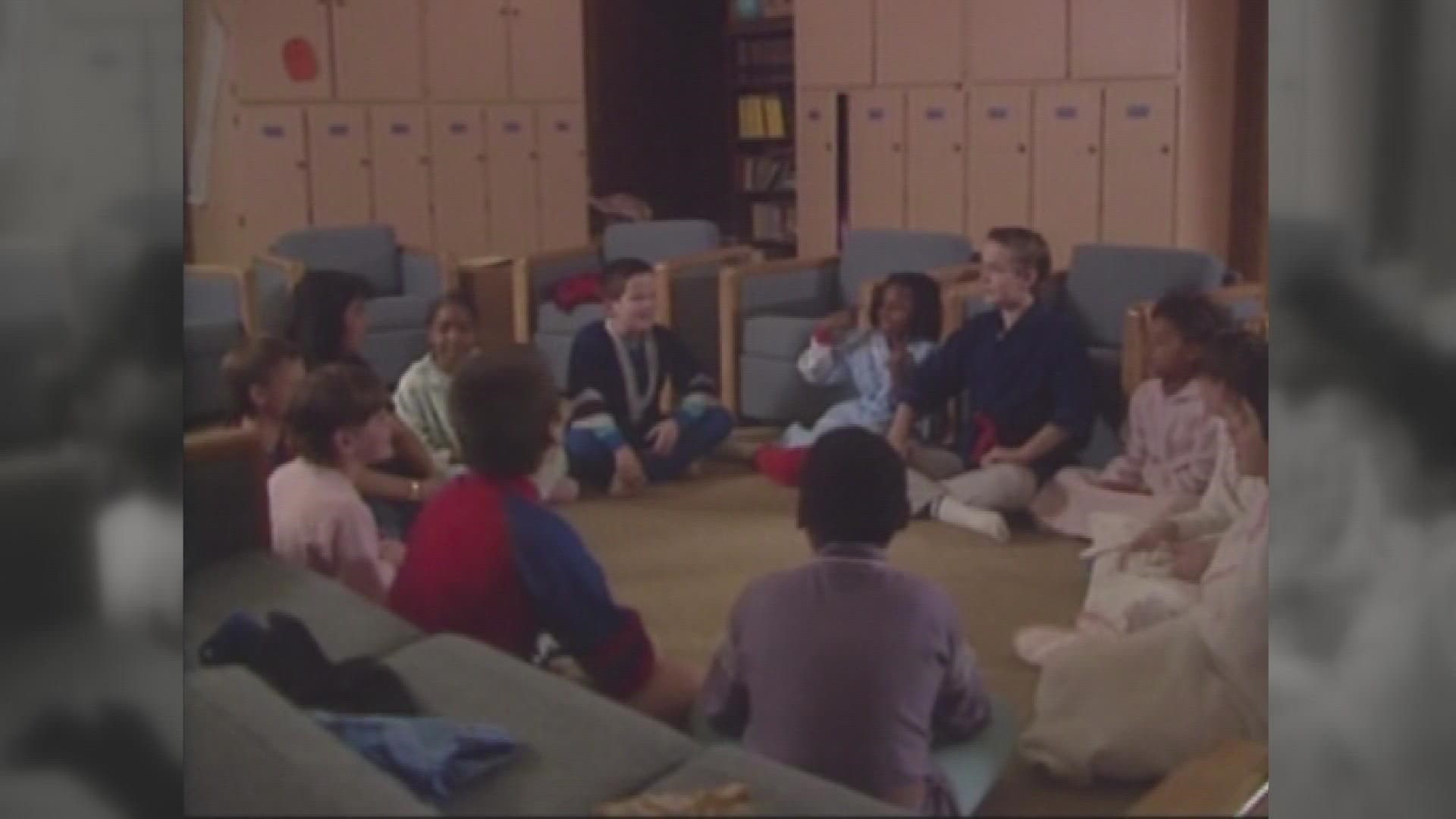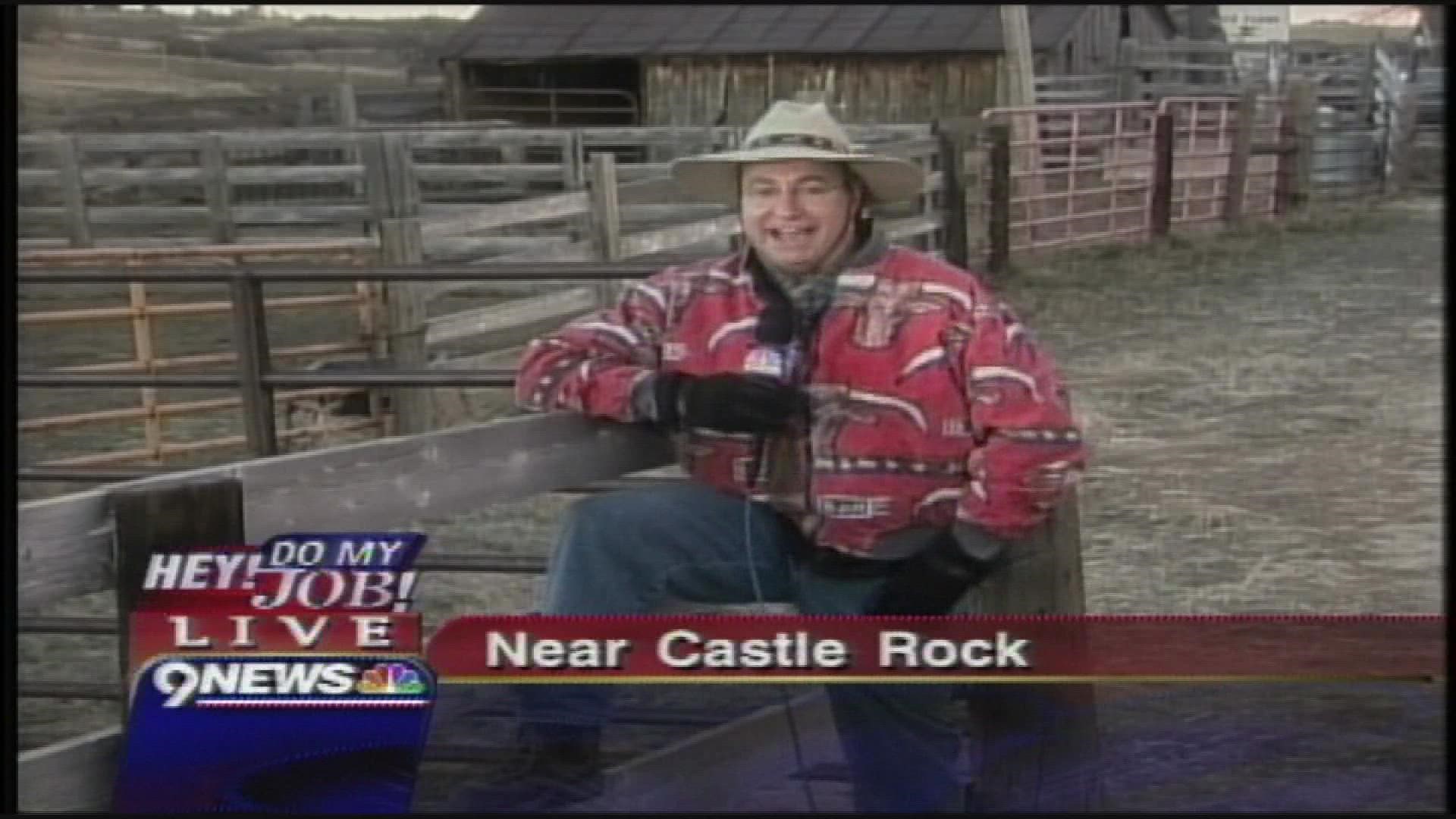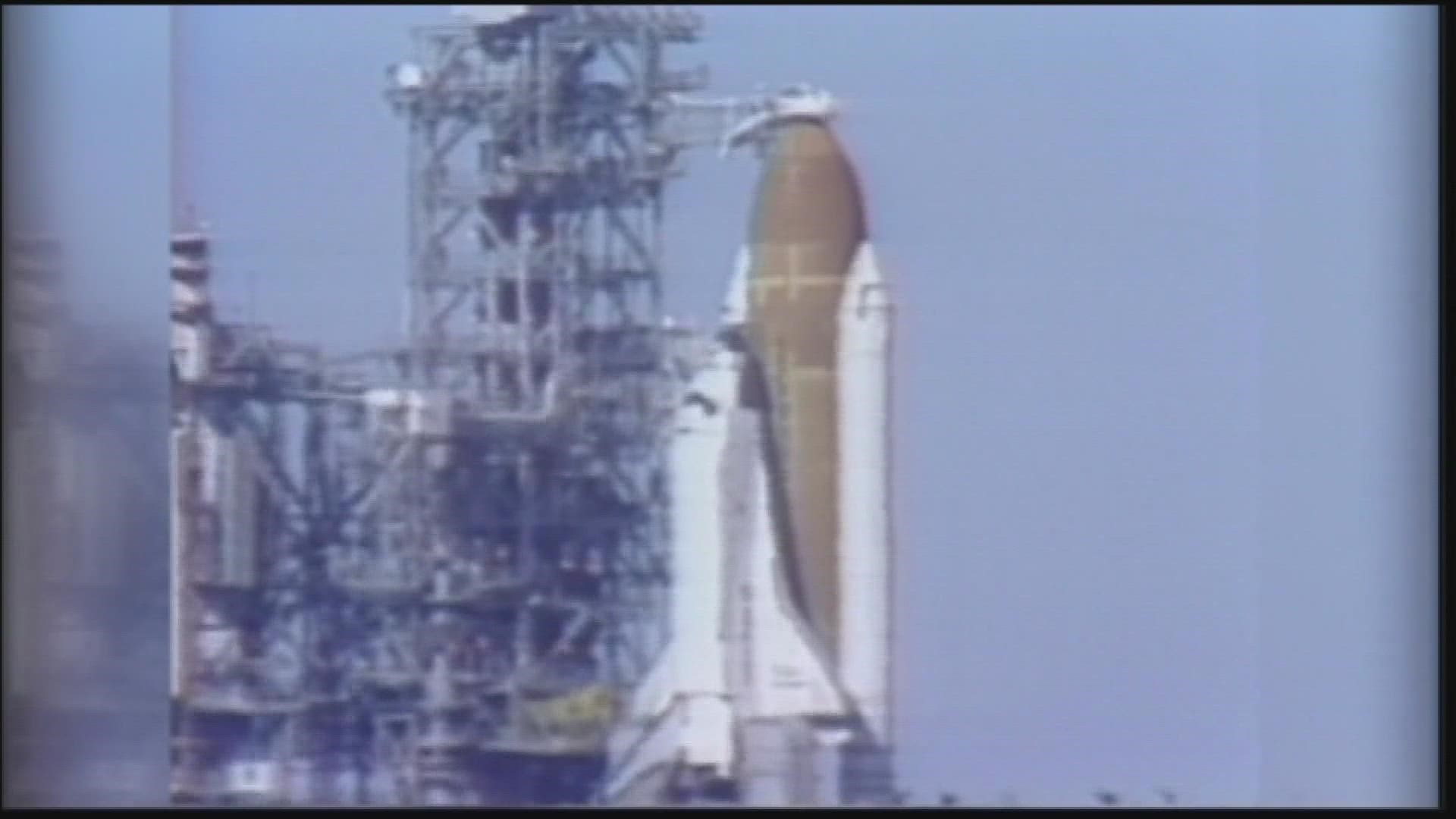DENVER — Gary Shapiro joined 9NEWS in 1983 as the Boulder Bureau Reporter. In 1989 he became the anchor of the 9NEWS Morning Shows. In August, Gary announced his retirement after a nearly 40-year career at 9NEWS.
Gary has won numerous awards including Emmys, Best of Gannett and awards from the Colorado Broadcaster's Association. He also won the coveted Edward R. Murrow award for documentary reporting.
During the month of November, Gary will be sharing 9 memorable stories he has covered in his 39 years at 9NEWS. Some are sad, some are funny, and others are inspiring.
Dance of the cranes
Several years ago I did a series for the Morning Show called “Over Colorado”.
The idea was to take viewers to places high up – the dome of the State Capitol, The Control Tower at DIA, the CU Research Facility on Niwot Ridge, and up on a tower crane.
That’s why Photojournalist Eric Kehe and I climbed 30 stories to the top of a crane on a construction project in LoDo.
Did I mention I’m kind of scared of heights?
It was one of the most challenging, yet coolest stories I’ve ever done.
With a camera strapped to my hard hat, up we went – and up and up and up.
When we finally got to the top Eric was moving all over the place shooting video. I grabbed the rail and didn’t really move much.
Every time the crane turned you could feel it from head to toe.
But the views were spectacular, and the experience was exhilarating.

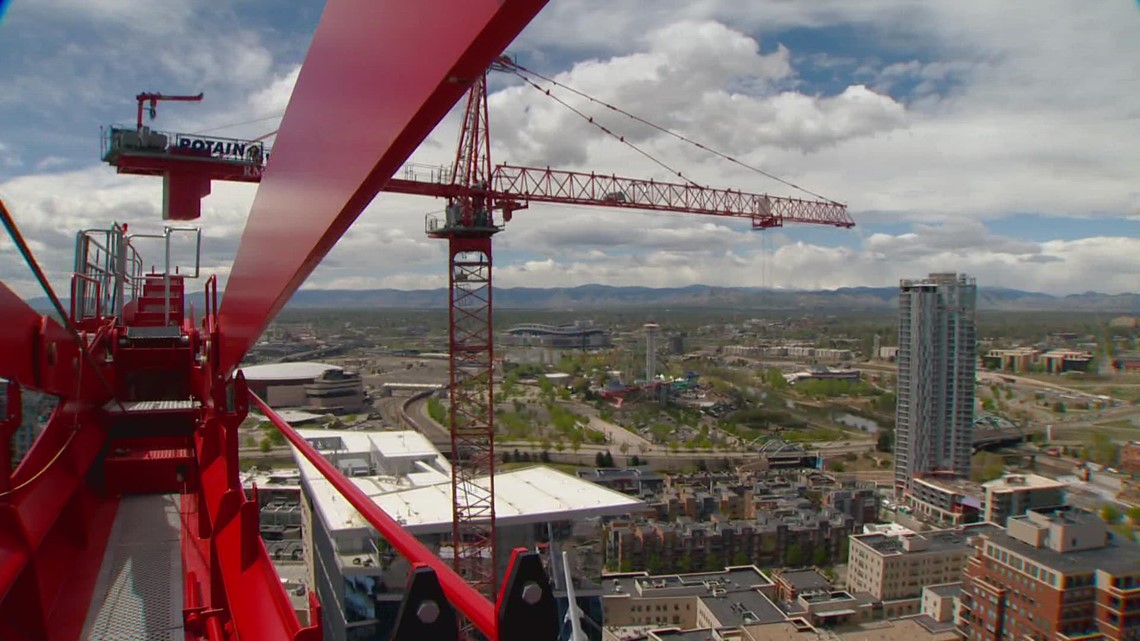
We met Jeff Macklin, the crane operator, who was a really awesome guy.
He explained how he gets called on the radio by the workers below – and moves the crane to their area to lift materials up to various places on the building.
Moving the crane up, down and around. All day long.
He climbs up early in the morning and does not climb down, many times, until nightfall.
He’s sat atop the crane thru rain storms, hail, lightning, wind, you name it.
And yes, when nature calls, he uses buckets and bottles.
Jeff said if he had to climb down during a shift - he’d probably just go home.
Eric came up with the idea to call the story “the Dance of the Cranes”.
A perfect name, for one of my favorite stories of all time.
Field of dreams
Shortly after the 9-11 terrorist attacks, I was looking for a lighter feature that might take people’s minds off the horrible news of the day.
I heard about a farmer near Kersey in Weld County, who built a baseball diamond in one of his fields so his son would have a place to play.
Photojournalist Dave Delozier and I headed up there and ended up with one of my favorite stories.
It was interesting, heartwarming, and inspirational.
We didn’t realize it would be – until we interviewed one of the baseball dads.
He talked about how therapeutic it was to build the field after all the stress and uncertainty of 9-11.
I didn’t see that sound bite coming.
Dave did such a great job editing the piece, and I just loved the way it turned out.
I hope you do too.
Columbine High School shooting
Since I’ve been at 9NEWS, I’ve covered dozens of big stories, dozens of horrible stories.
Possibly none of them affected me emotionally as much as the Columbine High School shooting.
On April 20, 1999, Kyle Dyer and I went on the air at about 11:30 a.m., after getting reports of active shooters at the high school.
We stayed on the air until 3:00 p.m. when Mark Koebrich and Kim Christensen came in and took over the coverage.
After we were done, it hit me.
The realization that 12 students and a teacher died, the confusion at the scene between law enforcement agencies and the anguish of the teachers and families.
The video of the students streaming out of the school in a line with their hands above their heads is forever stuck in my mind.
As journalists, this was a first. Covering the first major school shooting, and not knowing exactly how to proceed.
I think we did a good job, getting critical information out, following leads and getting reactions.
But we also made mistakes, putting witnesses on the air without proper vetting, reporting theories about the gunmen without confirmation.
We learned, law enforcement learned and the nation learned.
Sadly those lessons have come in handy with all of the school shootings since.
Living on the edge
In the early 80’s I was working in the Boulder Bureau.
Boulder had a Sister City in Jalapa, Nicaragua, going thru tough times because of a war going on there.
It raged for years, from 1979 to 1990.
The Sandinista Government was left leaning, the Contra Opposition was backed by the United States.
Jalapa, a small town on the border with Honduras, was pretty much stuck in the middle.
Some City Council members from Boulder decided to go there to help build a new school.
We went with them.
It was a difficult trip because the media had to get permission from the government to travel in the country.
After much lobbying, we finally got our press credentials and headed from the capital Managua to Jalapa.
We spent a week there, and did a 5 part series on the Nicaraguan people, living on the edge.
Photojournalist Greg O’Malia shot the series, and Victor Abalos was our producer and translator.
We slept on the floor of the City Hall, and woke up nearly every morning to the sound of machine gun fire, and roosters.
It was my only experience covering a story in a war zone.
Elway's hands
John Elway will always be remembered as the quarterback who led the Broncos to their first two Super Bowl wins.
In his 16 seasons with Denver, he had more than 50,000 total yards, 300 touchdown passes, and 33 rushing touchdowns. He was the heart and soul of the Broncos in the 80’s and 90’s.
Toward the end of his playing career, a local artist named Raelee Frazier, did a bronze statue of Elway’s hands holding a football. She had done many bronze castings of famous football and baseball stars and even pro golfers.
Photographer John Kuhrt and I did a story on how the Elway sculpture was made, from getting the original mold, to the foundry that poured the metal, to the final form.
Elway loved the sculpture, and the story gave viewers a rare (at that time) look at what a star quarterback is like off the field.
I love this story because it’s so unique.
Many thanks to artist Raelee Frazier for letting us tag along.
Frank DeVita
Photographer John Kuhrt and I went to Normandy, France to do stories marking 75 years since D-Day during World War II. We went with a group from Denver called the Overlord Project.
It was sponsored by the Denver Police Activities League, and named after Operation Overlord, the code name of the Allied Mission to land troops on the beaches of Normandy to fight the Germans.
They took students from High Schools and Middle Schools in the Denver area to France, to show them the historic sites and teach them the importance of D-Day.
D-Day was June 6, 1944.
More than 160,000 Allied troops landed along a 50-mile stretch of heavily-fortified French coastline. They came in thousands of ships, boats and aircraft.
The fight was bloody, more than 9,000 Americans were killed or wounded in the attack.
Jake Schroeder is the Director of the Denver PAL Overlord project, and he invited Veterans who fought at Normandy to talk to the students. That’s how we met Frank DeVita, from New Jersey.

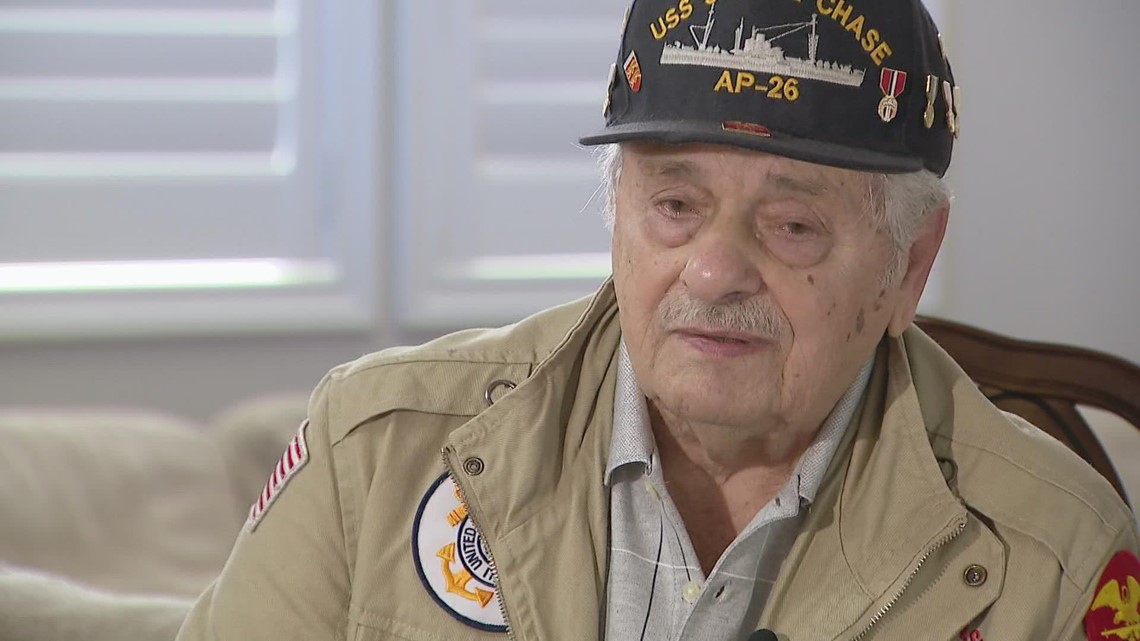
Frank made 15 trips to Omaha Beach in a small craft, ferrying soldiers to fight and returning to his Navy Transport Ship with the wounded or dead.
Of all the interviews I’ve done with Veterans over the years, Frank was the most passionate, interesting, and compelling.
He talked about how difficult it was to lower the ramp so the soldiers could get out, knowing the German machine gun bullets would get in.
He talked about the men, or boys as he called them, who died just feet away from him.
And he talked about how important it is to keep the story of D-Day alive because those who fought there wouldn’t be around too much longer to tell that story.
Frank DeVita passed away in May of 2022 at age 96.
Rest in peace Frank, I’ll never forget you.
Colorado Christian Home
There’s a treatment center in Denver that’s been around for more than 100 years.
It’s called the Tennyson Center, back in the 80’s it was the Colorado Christian Home.
They treat and educate kids who have been abused and neglected.
And more often than not, those kids become healthy members of society with the bright future that every child deserves. But getting there is not easy.
Photojournalist Chris Wheeler and I found that out when we spent a day at the center in 1985, documenting the life of an abused child.
It was right before Christmas, which may be the hardest time for the kids – separated from their family and friends while they are emotionally fragile.
Sometimes out of nowhere, the kids acted out and had to be restrained by the staff, for the safety of themselves and others.
Other times, they seemed like totally any other children – looking forward to the holiday.
Over the years privacy laws have changed. We would not be able to do this story today.
And over the years, rules on how to restrain kids in traumatic situations have changed a little.
But what hasn’t changed is the Tennyson Center’s passion for making damaged kids whole again.
They still do it today and are still very good at it.
I should mention that I was a member of their Board of Directors for 12 years.
Hey! Do my job
In the early 2000’s, we did a segment on the morning show called “Hey! Do My Job. Viewers invited the anchors to join them at their job for a day. I was invited to herd cattle on a ranch in Douglas County. I thought that would be fun. Little did I know how much fun until I met Allison O’Connor. She raised cattle just north of Castle Rock, and while I may not have been your typical cowboy, Allison was anything but your typical cowgirl!
For one thing, she loved rap music and was a big fan of Eminem. Allison was very proud of her tongue ring, and was amazed at the wild west clothing selection by the “Jewish Cowboy”. But she was a wonderful host, and photojournalist Manny Sotelo and I met up with her and some ranch hands to move cattle from one section to another.
I was pretty much at home on a horse, since I’ve ridden since I was a kid at my grandpa’s farm in Nebraska. I was even a wrangler one summer at a youth camp.
It was a really cold day but Black was a great horse, and riding with Allison was so interesting I hardly noticed the temperature. We talked, moved the cattle (with her cattle dogs doing most of the work), and discussed the life of a rancher.
There was an extreme drought (yes, even back then). She said many ranchers had to sell their cattle early because there was no grass for them to graze. It was a really difficult time and I’m guessing it’s not much better now. But it was a life the ranchers chose, and loved, and they did what had to be done to survive.
I had such a great time that day, and Manny made the story look like a John Ford movie. I’ll never forget it.
Challenger explosion
9NEWS Photojournalist Manny Sotelo and I were at Cape Canaveral, Florida in 1986 when the Space Shuttle Challenger exploded, killing the 7 members of the crew. We were with a group of elementary school students and teachers that won a contest sponsored by Ball Aerospace in Boulder County. The winners got to go to Florida to watch the Space Shuttle take off. It was a historic mission because the very first teacher-astronaut, Christa McAuliffe was going to teach lessons from space. It was a big local story not only because of the students we were with, but because there was a spacecraft onboard the shuttle designed by CU Boulder called Spartan Halley. It was going to be used to study Halley's Comet. And one of the astronauts on the mission was a CU graduate - Ellison Onizuka. A big group of dignitaries from CU was also there to watch the launch.
After being scrubbed several times for technical issues, Challenger was ready to go. It was a very cold morning, and no one really had warm clothes, because we figured Florida would be warm, or at least pleasant. The liftoff was very dramatic, and the sound shook the earth where we were, across the causeway. Manny was shooting the faces of the students and teachers when the space shuttle exploded 73 seconds after takeoff. It was a tiny dot in the sky from where we were standing, but you could tell right away something wasn't right. When Mission Control announced over nearby speakers that the "vehicle has exploded", the faces that Manny recorded on his videotape turned to expressions of shock, confusion and sadness. We witnessed history, but nothing like we expected. Our happy news feature immediately turned into a huge national story.
Over the years, Manny and I interviewed those kids about every 10 years or so. It was the first time most of them had to contemplate life and death, and they grew up quickly. They remained friends and still are to this day. They shared a bond that's hard to explain, but they say that experience helped shape the adults they are today. They are now aerospace engineers, software engineers, artists and writers. They remember that day like it was yesterday. They also remember when Ball Aerospace took them back to Florida to watch the Space Shuttle Discovery "Return to Space" mission more than a year later. Manny and I went back with them and did the happy story we were intending to do the first time.
Like those students, I also remember the day the shuttle exploded so clearly. It was my first really big story as a young TV reporter, and I too had to grow up quickly.
SUGGESTED VIDEOS: Feature stories
9NEWS+
9NEWS+ has multiple live daily shows including 9NEWS Mornings, Next with Kyle Clark and 9NEWS+ Daily, an original streaming program. 9NEWS+ is where you can watch live breaking news, weather updates, and press conferences. You can also replay recent newscasts and find videos on demand of our top stories, local politics, investigations and Colorado specific features.
To download 9NEWS+ on Roku search for KUSA.
To download 9NEWS+ on Fire TV search for 9NEWS.

